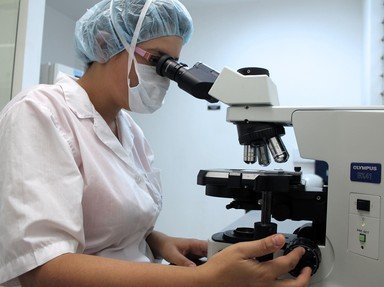Quiz Answer Key and Fun Facts
1. Cellular respiration is the chemical opposite of photosynthesis. What is its basic chemical formula?
2. Cellular respiration is completely aerobic, meaning that every phase needs oxygen in order to take place.
3. Which isn't an end product of glycolysis?
4. The Krebs cycle occurs within the mitochondria of a cell. Which best describes the site of the Krebs (citric acid) cycle inside the mitochondria?
5. Before the Krebs cycle, pyruvate from glycolysis is attached to an enzyme that makes it easier to break down. Carbon dioxide is released and a molecule of NADH is formed. What name is given to the molecule that now enters the Krebs cycle?
6. The final step in the process of cellular respiration is the electron transport chain (ETC). What best describes the first step in the electron transport chain?
7. Once enough H+ ions have been pumped outside the membrane, they tend to move back inside the membrane. What is this random movement of particles from areas of high concentration to low concentration called?
8. As the ions move back through the membrane, they flow through the enzyme that is the center of all cellular respiration. What is this important enzyme?
9. Two oxygen atoms enter the inner mitochondrial matrix at the end of the ETC. They bond with the electrons from the membrane and the protons that just passed through it to form what final product?
10. The electron transport chain is the only way that cells make ATP.
Source: Author
adams627
This quiz was reviewed by FunTrivia editor
crisw before going online.
Any errors found in FunTrivia content are routinely corrected through our feedback system.

